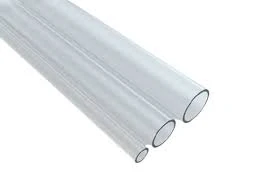Oct . 13, 2024 19:14 Back to list
plastic pipe fittings
Understanding Plastic Pipe Fittings A Comprehensive Overview
Plastic pipe fittings are essential components in modern plumbing and piping systems, widely utilized in both residential and industrial applications. These fittings play a crucial role in connecting, directing, and terminating the flow of fluids within various types of plastic piping systems. This article delves into the different types, benefits, and common applications of plastic pipe fittings.
Types of Plastic Pipe Fittings
Plastic pipe fittings come in several types that cater to various installation and plumbing needs. The most common types include
1. Elbows These fittings are used to change the direction of the pipeline, typically at a 90-degree or 45-degree angle. Elbows are vital in routing pipes around obstacles or designing intricate plumbing layouts.
2. Tees This type of fitting allows for branching off a pipe; it has one inlet and two outlets, facilitating the connection of additional pipes. Tees are particularly useful in systems requiring fluid distribution to multiple locations.
3. Reducers These fittings are designed to connect pipes of different diameters. Reducers are necessary when transitioning from a larger pipe to a smaller one, ensuring a smooth change in flow and pressure.
4. Couplings Couplings serve to connect two lengths of pipe together, helping to extend piping runs or repair sections of pipe. They can be straight couplings or male/female types depending on the connection requirement.
5. Caps Used to seal the end of a pipe, caps ensure that no fluid escapes from the system. They come in handy during pipe maintenance or when a section of the plumbing system is not in use.
6. Adapters Adapters provide a connection point for different piping materials (e.g., plastic to metal) or different pipe sizes. Their versatility is critical in systems that mix various materials and types.
Benefits of Plastic Pipe Fittings
Plastic pipe fittings offer several advantages over traditional metal fittings
plastic pipe fittings

1. Corrosion Resistance Unlike metal fittings, plastic fittings do not rust or corrode, making them ideal for use in environments with moisture or chemical exposure.
2. Lightweight Plastic fittings are significantly lighter than their metal counterparts, making them easier to handle and install, especially in larger projects.
3. Cost-Effective Generally, plastic fittings are less expensive than metal fittings. Their longevity and low maintenance requirements contribute to overall cost savings in plumbing projects.
4. Ease of Installation Many plastic fittings utilize socket-welds or threaded connections that do not require special tools. This ease of installation can result in reduced labor costs and quicker project turnaround.
5. Diverse Applications Plastic fittings can be used in a wide range of applications, from potable water systems to wastewater management. Their versatility makes them suitable for both indoor and outdoor settings.
Common Applications
Plastic pipe fittings are ubiquitous across various sectors. In residential plumbing, they are used for water supply lines, drainage systems, and irrigation setups. In industrial settings, plastic fittings are utilized in chemical processing, food and beverage manufacturing, and waste management systems due to their resilience and compatibility with numerous substances.
Additionally, with the growing emphasis on sustainability, plastic pipe fittings often come from recycled materials, making them an eco-friendly choice. Innovations in material science, such as the development of high-density polyethylene (HDPE) and polyvinyl chloride (PVC), have expanded the range of plastic fittings available, enhancing their performance and applicability.
Conclusion
In summary, plastic pipe fittings are integral elements of contemporary plumbing and piping systems, offering diverse types that serve myriad functions. Their benefits, including corrosion resistance, cost-effectiveness, and ease of use, make them a preferred choice in many applications. As technology advances, the future of plastic fittings looks promising, with ongoing improvements in material quality and design, ensuring they will continue to meet the demands of both today and tomorrow.
Whether for home improvement projects or large-scale industrial installations, understanding plastic pipe fittings and their advantages can significantly enhance the efficiency and reliability of piping systems across the board.
-
High-Quality PPR Pipes and Fittings Durable ERA PPR & PVC PPR Solutions
NewsJul.08,2025
-
Black HDPE Cutting Board - Durable, Non-Porous & Food Safe HDPE Plastic Cutting Board
NewsJul.08,2025
-
High-Quality CPVC Panel Durable HDPE & PVC Panels Supplier
NewsJul.08,2025
-
Double PE Welding Rod Supplier - High Strength, Durable & Versatile Welding Solutions
NewsJul.07,2025
-
High-Quality PVC-O Pipe Supplier Durable 75mm PVC Pipe & Connections Leading PVC Pipe Company
NewsJul.07,2025
-
HDPE Drainage Pipe Supplier – Durable & Corrosion-Resistant Solutions
NewsJul.06,2025

